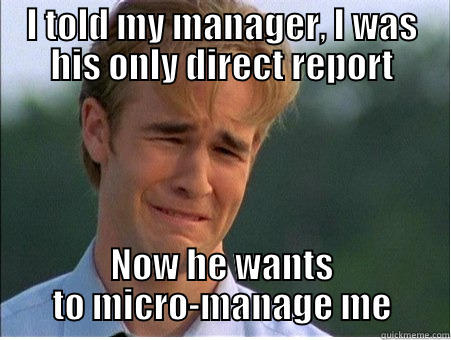|
Simple tools and practical insights for personal organization, scheduling and project management. Part 1 focuses on tips and tools for personal organization. Part 2 will address setting up a foundation for team organization. Clarity. Consistency. Accountability. Personal growth is related to personal organization, scheduling and utilizing project management practices to prepare yourself for success.
If you want to hear more from Caiden, you may enjoy his Sport's Picks.
0 Comments
Simple tools and practical insights for personal organization, scheduling and project management. Part 1 focuses on tips and tools for personal organization. Part 2 will address setting up a foundation for team organization. "Success tomorrow starts with making a plan today." Simple tools for personal organization, aka daily success, aka scheduling include:
1) a notebook 2) a pen 3) a computer with simple programs such as Google calendar 4) a phone with a task list or calendar (sync with computer) Making a daily plan should be a habit that helps you to set yourself up each day for success in the upcoming days activities. 1) make your handwriting legible 2) start with the date and think through your day 3) organize your tasks in relationship to importance 4) by keeping structure to your daily outline you can add notes (make sure they are legible) 5) update your task list as you accomplish items as well as when you add them 6) carry over unfinished tasks to the following day 7) make it a habit to set you list the day before, to update at intervals during the day as well as when new assignments come up Personal organization is a recipe for success. Success tomorrow starts with making a plan today. These simple habits are key to to clarify your activities according to your mission, to schedule for mission momentum and keep yourself accountable to following through. Dysfunction is easy. Writing sloppily, not keeping items in order and failing to follow through are all set backs that could lead to disaster. Stay on top of yourself - or as we say, "Don't get behind, that's where the farts are (read more HERE)." Clarity. Consistency. Accountability. For more information, tips and videos check out our webpage - http://www.izvents.com/words/category...  How many direct reports is the most effective for a leader? How many direct reports is the most effective for a leader? Structure your team for success with the right view of span of control, interactions and direct reports. When an organization grows beyond the one-person operator delivering goods and/or services out of their garage, the process of building systems for success becomes essential to long term health. What works as a small company has to evolve as the company grows or the organization will outgrow the preceding systems. As an organization grows, adapts, changes and evolves, one question every leader and organizational system must answer is how many direct reports any given person in a position of leadership should have. At the end of the day this question has no right answer given that each organization is unique and each manager has a different threshold for efficacy. Let’s take a look at some of the metrics, discussions and insights related to the topic of finding the right number of direct reports. Gauging interactions (energy output) How do you measure efficacy when assessing the right number of direct reports? Business Insider took a peek at the number of reports of Tim Cook, the COO made CEO of Apple, who was believed to have upwards of 17 direct reports. Hal Gregersen, Ph.D., the executive director of the MIT Leadership Center states, “It's a question of how many people a leader can have a constructive conversation with when everyone is in the same room (Lebowitz, 2015).” Time is a limited resource that every manager only has so much of and trust is the greatest asset in developing employee engagement in an organization, the question is not how thin can a leader stretch themselves but how effective they can be in leading the members of their team whether directly or indirectly. Business journals and many persons in a position of leadership (PIAPOL) site Japanese management philosophy and regard 6-7 direct reports as the maximum number that a leader can effectively manage. In his own defense, Tim Cook emailed a response to Business Insider countering that, “"If you have smart people, a strong organizational culture, and a well-defined and articulated strategy that everyone understands, you can [have] numerous direct reports because your job isn't to tell people what to do.” Whether those analyzing a leader from within the organization or from the outside agree with the direction and decisions that they make, at the end of the day they will rise or fall based upon how they approach their leadership responsibilities. Measuring span of control So much of this discussion on the optimum number of direct reports is opinion based, one metric cited by Schaffer Consulting remarks that span of control is something which can be measured in this discussion, “When a manager goes from four to five subordinates, his potential interactions with them increase from 44 to 100 over a given period; and going from seven to eight subordinates raises the total interactions from 490 to 1,080 (Inc.).” This is a classic business concept that continues to be of relevance and value to organizations such as the United States Air Force in their goal of focusing missional clarity. Size of the organization obviously comes into play and the overall structure of a team must be crafted to support it’s necessary functions as well as it’s growth goals. As for the ethereal question "What is the right span of control for a manager," a consultant Jamie Flinchbaugh blogged, "Some factors to consider are: The narrower the span of control, the more coaching at the point of activity can be done; the broader the span of control, the more the entire process can be encompassed within fewer decision makers and more aligned decisions (The Build Network, 2014).” This is a simplified means of looking at the bigger picture, but a leader must analyze the position they are in with regards to the development of their organizational structure to determine where their immediate efforts are most valuable. Does the leader need to be directly involved in the training of key share holders in the building process or do they need to take a few steps back from the process to empower those on their leadership team to take ownership for their areas of responsibility. Avoiding top heavy management If the number of direct reports is too low, because the team has built multiple layers of upper and middle management to insulate those in positions of executive leadership there is a potential for disconnect. When an organization becomes slow and top heavy by way of structure, there are too many layers to weave through in order to accomplish anything in a timely or mission centered manner. As far back as 1989, Jack Welch, the CEO credited with turning GE around, was an advocate against the six direct report rule for many of these reasons. In an interview with Harvard Business Review, the management guru shared his candid thoughts on the matter, “We took out management layers. Remember the theory that a manager should have no more than 6 or 7 direct reports? I say the right number is closer to 10 or 15. This way you have no choice but to let people flex their muscles, let them grow and mature. The leader can focus only on the big important issues, not on minutiae (Tichy & Charan, 1989).” Systems should be built to support the people in the field who are making the products and/or delivering the services that make up the core functions of the organizations value interaction with the market. The question of the right number of direct reports is not a matter of ego nor strictly of science, but rather is a key discussion that will evolve with the needs of the organization in a manner that is unique to that team. Mike Myatt, Forbes contributor and chairman of N2 Growth, shares, “Where many leaders become disoriented is by confusing platform with people, and position with responsibility. Here’s the thing – it’s not about the platform, it’s about the people. Without the people there is no platform, and ultimately nothing to lead. It’s not about you (the leader), but what you can create and influence through those you lead (Myatt, 2012).” Rather than looking for the perfect number of direct reports, a leader should ask how many people they can effectively support to keep the vision and mission of the organization moving forward with relationship to the team’s values. Clarity. Consistency. Accountability. References: Lebowitz, S. (July 8, 2015) Apple CEO Tim Cook now has 17 direct reports – and that’s probably too many. Business Insider. Retrieved from http://www.businessinsider.com/apple-ceo-tim-cook-has-too-many-direct-reports-2015-7 The Build Network (April 3, 2014) Wait, how many reports direct reports did you say you have? Inc. Magazine. Retrieved from https://www.inc.com/the-build-network/direct-report-challenges.html Tichy,N., Charan, R. (October 1989) Speed, simplicity, self-confidence: An interview with Jack Welch. Harvard Business Review. Retrieved from https://hbr.org/1989/09/speed-simplicity-self-confidence-an-interview-with-jack-welch Myatt, M. (November 5, 2012) Span of control – 5 things every leader should know. Forbes. Retrieved from https://www.forbes.com/sites/mikemyatt/2012/11/05/span-of-control-5-things-every-leader-should-know/#7f921b0328c8  "If we don't battle to the death, they will kill us both" "If we don't battle to the death, they will kill us both" Originally published as The Cause, Cost and Countermeasure to Conflict in an Organization in The Project Management Times By Jon Isaacson If you have dysfunction in your team, the cost may be higher than you want to admit but the cure may also be closer than you realize. Frustration in the workplace, does such a thing exist? In a recent article in Forbes magazine, researchers discussed the primary sources of disgruntlement within organizations. According to the study, most employees noted that they were frustrated by personality differences and incompetence in their co-workers. This is not news to anyone who has worked in an organizational setting, one human plus one human will eventually equal conflict. The potential for conflict, as well as the intensity and duration, are compounded by the number of humans added to the equation. More people, more problems. What is interesting about the Forbes article is that upon further investigation there was an underlying source which contributed to the environment of dysfunction, “In fact, teams having conflict had much higher levels of ambiguity in three categories of work: their team’s goals, roles, and procedures. So, while it is very human to assign personal motive and blame in times of trouble, there isn’t really anything personal about the core of workplace conflict. If you back up and look at the facts, a lack of clarity is what’s truly to blame.” (Wakeman, 2015) The need for clarity is foundational to functionality and trust within an organization. Where there is a lack of clarity, there will be conflict. Office drama is costly, CPP Inc. performed a study in 2008 which discovered that employees in the United States spent 2.8 hours per week dealing with conflict which CPP estimated as costing over $359 billion in paid hours or the equivalent of 385 million working days (Lawler, 2010). Every business understands the need to watch the bottom line, so why are mangers unwilling to recognize the high cost of conflict? Think of it, if every employee in your office could increase engagement and efficiency by 7% by only changing one element, wouldn’t that be something a wise leader would be more intentional about? Recognize the cost of inaction. Managers spend much of their time putting out fires, and yet our discussion to this point has demonstrated that the cure for dysfunction may be closer that you think. By understanding the cost of conflict, we recognize the value of investing in practices that will help our organization to identify and address these hot beds of discordance within our teams. Realize the need to eliminate the blame game. When employees focus on blaming each other, too often managers are happy to allow them to target their ire upon each other rather than dealing with the core of these issues which creates a negatively recurring cycle. As noted by the author in a prior article - how leaders respond to conflicts can either reinforce cultural values that strengthen the team, or they can respond in ways that destroy morale (Isaacson, 2016). Reduce conflict by creating clarity. If the research from Wakeman and her team as outlined in Forbes is accurate, then leaders can make a significant reduction in interpersonal conflict by being more intentional about organizational clarity. As a leader, you can alleviate friction between team members by being more clear about team goals, roles, and procedures as quoted above. If we can sense the frustration in the organization and we can calculate the deep costs, we should be proactive in working towards long-term solutions. Often inaction is caused by an inability to identify the causes or formulate an effective plan, but now that these have been brought to light the only question left is whether we will be intentional about getting into the mix to make the magic happen. There are no shortcuts when working with interpersonal dynamics but progress is attainable through the countermeasures for the conflict we have discussed. References Wakeman, Cy (2015, June 22) The number 1 source of workplace conflict, and how to avoid it. Forbes. Retrieved fromhttp://www.forbes.com/sites/cywakeman/2015/06/22/the-1-source-of-workplace-conflict-and-how-to-avoid-it/#32a27f89126e Lawler, Jennifer (2010, June 21) The real cost of workplace conflict. Entrepreneur. Retrieved fromhttps://www.entrepreneur.com/article/207196 Isaacson, Jon (2016, July 11) Eliminating blame in your organization. Retrieved from http://izvents.weebly.com/words/eliminating-blame-in-your-organization |
AuthorThoughts on personal and professional development. Jon Isaacson, The Intentional Restorer, is a contractor, author, and host of The DYOJO Podcast. The goal of The DYOJO is to help growth-minded restoration professionals shorten their DANG learning curve for personal and professional development. You can watch The DYOJO Podcast on YouTube on Thursdays or listen on your favorite podcast platform.
Archives
March 2023
Categories
All
<script type="text/javascript" src="//downloads.mailchimp.com/js/signup-forms/popup/unique-methods/embed.js" data-dojo-config="usePlainJson: true, isDebug: false"></script><script type="text/javascript">window.dojoRequire(["mojo/signup-forms/Loader"], function(L) { L.start({"baseUrl":"mc.us5.list-manage.com","uuid":"b9016446bd3c6a9f0bd835d4e","lid":"83282ffb9e","uniqueMethods":true}) })</script>
|
Jon Isaacson |
Connect. Collaborate. Conquer.
© COPYRIGHT 2015. ALL RIGHTS RESERVED.
|



 RSS Feed
RSS Feed